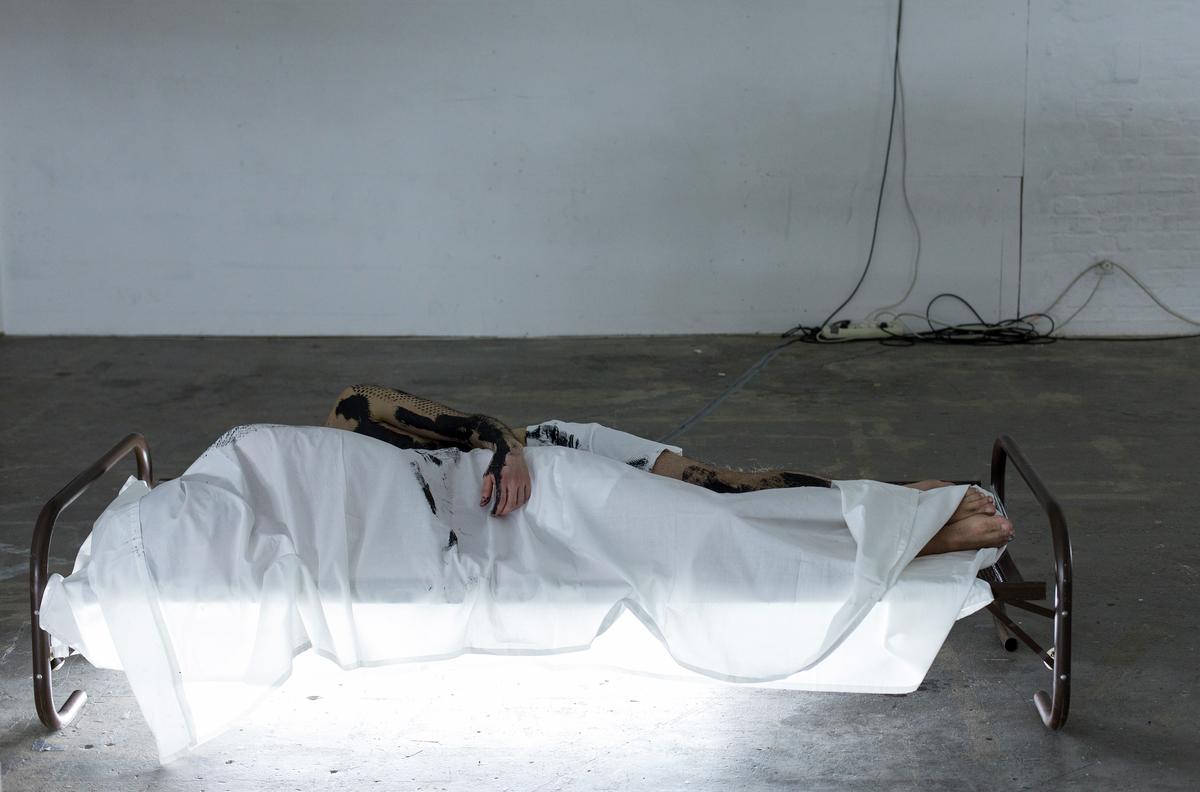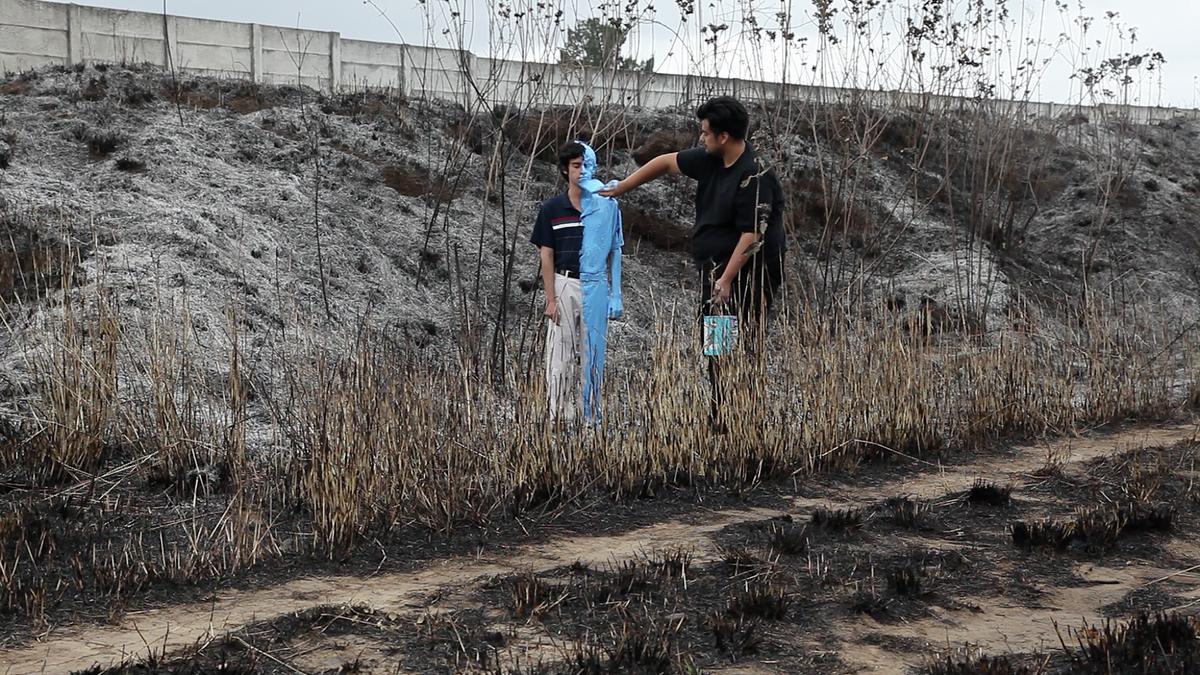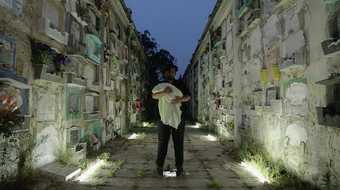12 rooms in Artist and Society
How do histories and actions exist on our bodies? Ramírez-Figueroa uses performance to tell stories about memory and identity
Naufus Ramírez-Figueroa draws on memories and stories from his life in Guatemala, including family members who were killed during this time. He was born in 1978 and moved to Canada at the age of six, when Guatemala was in the middle of a civil war (1960–96). The war was fought between the military government and rebel groups concerned about unfair land distribution. Most of the country was owned by foreign citizens and companies rather than Indigenous peoples who lived on the land. It is estimated that up to 200,000 people were killed or forcefully ‘disappeared’ during the conflict.
The three works in this room feature the artist performing small gestures of holding, painting and pressing to explore how we make the invisible visible, and vice versa. Blue Abstraction references the history of early black-and-white cinema, where figures were painted with colour to create the impression they had disappeared. Ramírez-Figueroa does this to reflect on the way our minds often suppress traumatic events. In Life in His Mouth, Death Cradles Her Arm the artist stands in a Guatemalan cemetery holding a shawl or shroud that ‘weeps’ as water drips to the floor. In Print of Sleep, he stages a mysterious ritual, where he uses a bedframe to make imprints on participants’ bodies.
Performance is central to Ramírez-Figueroa’s practice for the way it can transform our understanding of reality and everyday objects. He asks us what it means to exist, to represent, and to re-present, stories left untold. Action happens to figures in these videos, in the same way that events happen to us, and we are left to draw our own conclusions.
Art in this room




